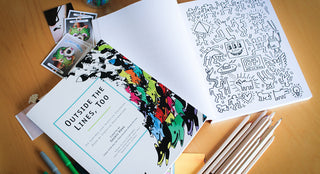Souris Hong is a New York Times Best Seller for a book with no words. She graduated with a degree in environmental science and worked on Boston’s $22 billion public works project, Big Dig, before completely shifting gears into the creative field, landing a gig with Slayer and then delving into the magazine world with Tokion. After years of being surrounded by creatives, she curated Outside the Lines and Outside the Lines, Too—two coloring books filled with artists from Keith Haring to CLAWMONEY to the Eames Office and more. I caught up with Souris in her Los Angeles home, adorned with art by KAWS, Rodney Alan Greenblat (remember Parappa the Rapper?), and Dabs Myla, to discuss the thought process behind her book, the creative community, and get her advice on making it in the creative world.
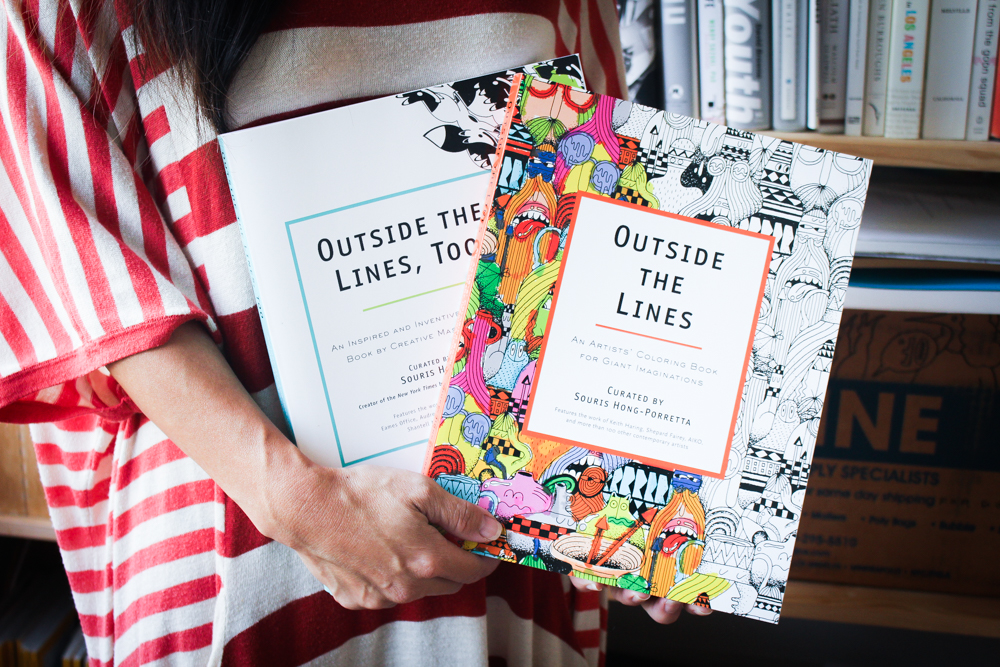
Wow, your house is so amazing. I love your art collection.
Thank you! The thing is like, it’s so weird because it wasn’t even a collection I was collecting. It was just over the years of being and working with creative people and then it just worked out where these people ended up being artists and museum artists.
It’s crazy—like the things that you buy and you don’t think about it blowing up.
Like you don’t think about the Invader tile I bought for $80, and the KAWS. A lot of this wasn’t even bought. It’s gifted stuff.
And now that stuff is priceless. I guess it has to do a lot with community and once you get into the community you get to share more... Can you talk more about this? How do people get involved in this art community and how does it continue and progress?
It’s 2015, the community is very different now because of social media. Back then, no one was getting into the community because it was cool or whatever. It was just that these were your friends and people were hanging out and collaborating and doing really creative stuff together. Today, I think if there’s a creative person you admire, you can tweet to them or reach out to them on social platforms and send them messages and have more of a direct connection to them. But when I was growing up, you had to seek these people out. So that’s what I did. [Tokion] was just a community of creative, young people pushing out content, making films. We collaborated with music people, fashion people, brands. We did a lot of double-named goods. My daughter has a A Bathing Ape/Tokion Pillow from like, 2000. We were doing collaborations with A Bathing Ape back then, before Pharrell knew what it was and before other people knew what it was. The things just caught on over the years. Nobody knew that it was going to be cool, but everyone involved was very creative and had good energy. And I think, from that whole beautiful losers outsider art movement, things just grew from there.
Do you think that this kind of community is less accessible now because people just do things because it’s cool? Like, I feel like now there’s not as much depth because people do things that are superficial, to be cool, whereas back then it was more organic.
Before social media, you got to know people because you would go out every night in New York and you would meet up with people. And then, because of that, you would actually get to know people and then... Like, if I met you and we were out, and I saw you again at another party and then I saw you again, we’d become friends and might actually collaborate on stuff together. And I think it’s the same today, but everything is facilitated by social media so the relationships can be forged faster. And also, you can Google people. You couldn’t Google people back then, so you didn’t know. You had to discover one another more naturally from being in one another’s presence versus being like, “I know who Bobby Hundreds is because I can look up The Hundreds online and see what he’s done,” and stuff like that. But it doesn’t mean that the relationships are not sincere or authentic; I still think they are authentic, but it’s just a different way of making friends today.
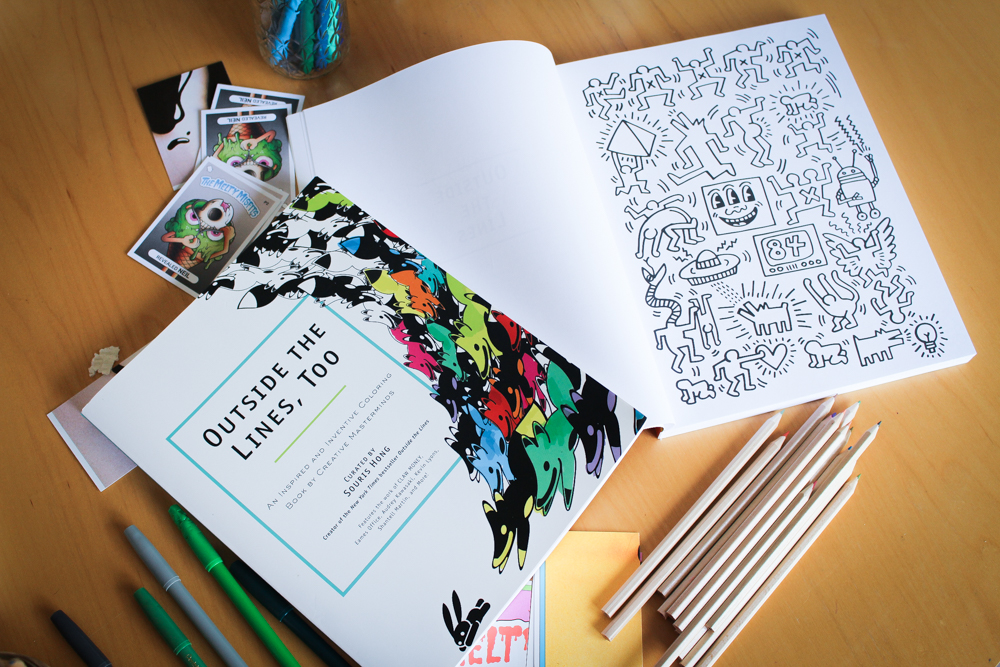
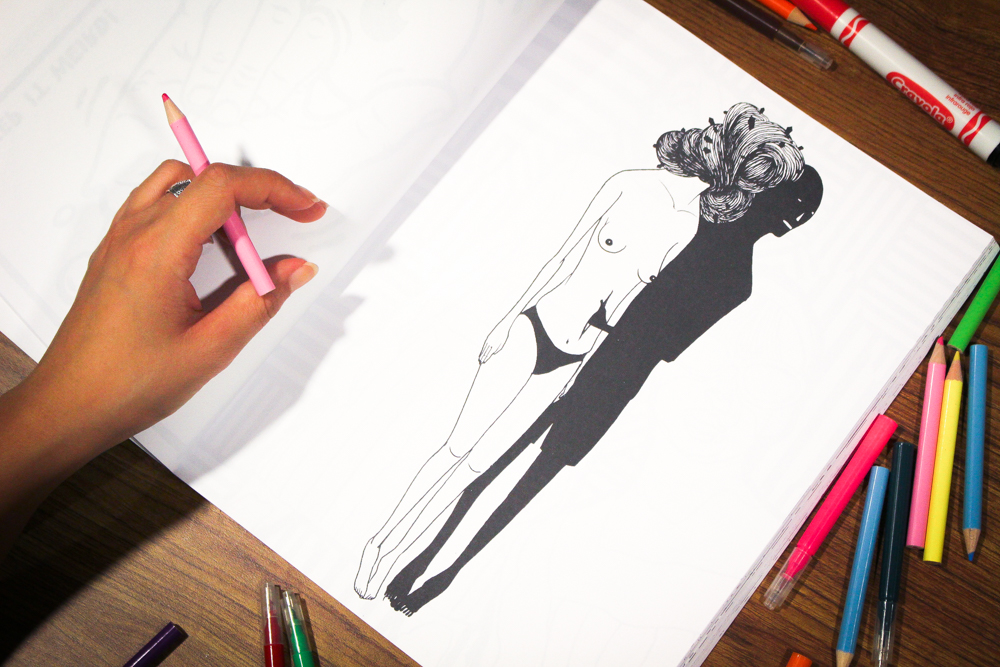
I just wanted to know what your personal background in art is, or how you started—did you go to school for art?
No, not at all! I graduated with a degree in environmental science from Boston University in 1994. But I always had an interest in art and creativity. In ’96 I was like, “You know what, I’ve done really well my whole life, I want to move to LA and do something kind of different.” My uncle has worked in music his whole career. He was former president of Island Records and GM of IRS Music and a couple other labels and he asked me if I wanted to work for Slayer. So I went and worked for Slayer for a couple years and then I discovered Tokion, the magazine, and went to work for Tokion. And through my work at Tokion and my relationships that I made, I learned the language of visual arts through watching my friends do what they do. I would write for the magazine, I would edit, and I would also help run the business of the magazine. We were like a ma and pop shop that put out a fairly nice title but we were kids in a room just trying to make every deadline. A lot of people that we worked with then are quite big now. The original art directors were Jeff Staple and Kevin Lyons and Deanne Cheuk. All of them have amazing art careers and graphics work and lifestyle. So my education was from the street—basically learning from creative people and having an interest in it. Of course, there’s proper arts education and things like that, but I learned everything I know from what I like and what was interesting to me.
What inspired you to make a coloring book in the first place?
So my daughter was one and a half years old, and because her dad is an artist and because I work with visual artists, a lot of people would ask what they could bring her when they came to visit. And our friends were all over the world, so she had coloring books from Germany, France, England, Japan, Spain.... And there were really generic coloring books, and some were really cool—I had gotten her the Keith Haring coloring book and Andy Warhol coloring book. And then, we had gone to Paris to the Foundation Cartier show for Moebius and bought her a Moebius coloring book. I noticed that she wanted to color the artwork of Haring and Warhol and Moebius over all the others; she had all these coloring books, but she had a preference for coloring the artworks of these visual artists. I thought, “Well, that’s really weird; wouldn’t it be cool if she could color her dad’s art work, or our friends’ artwork?” So I wrote this list of 150 artists and 70 of them said yes within a couple of months and then, from that, I wrote a book proposal. I naively was like, “Oh, writing books!” I didn’t realize how hard it was, but I googled how to write a book proposal, wrote one, and then cold wrote two agents—they both accepted [my project] within a week. I wrote the one that I went with—my agent is Susanna Einstein in New York City—and she represented me and Penguin published the book. So I conceived it in 2010, submitted the proposal in 2011, and then it hit the stands in 2013. We had the book launch at MOCA and some of the proceeds of the sales help fund the Museum of Contemporary Arts’ education program. It did really well, so two years later we decided to do a second one. Another 120 different artists that didn’t make it into the first book, so the two books are entirely different.
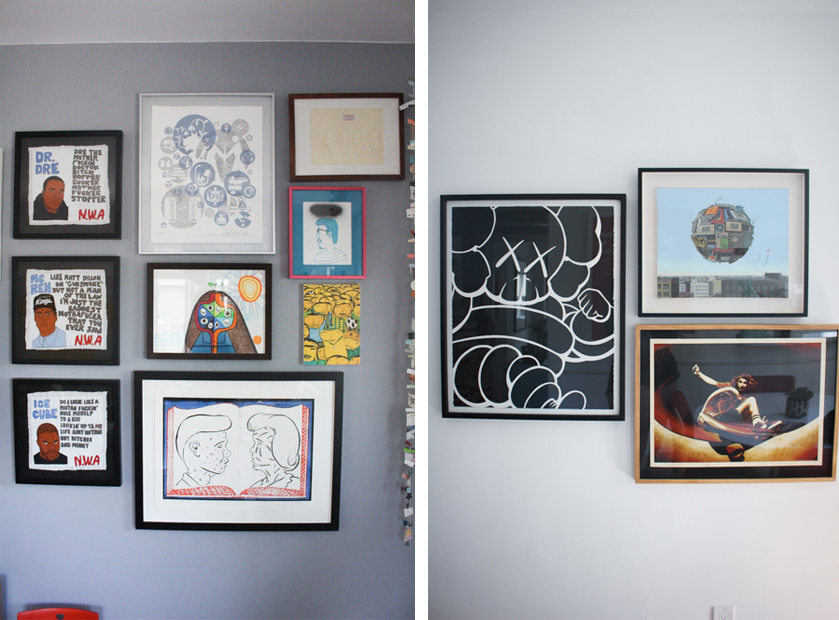
I know that a lot of the pages that were made were commissioned specifically for the book—did you give a guideline of what you were looking for in terms of artwork?
One of the publishers that had considered buying the book said that they wanted me to curate it a little bit more—maybe themes or something like that. The thing is, the book is made of creative people that are not traditional visual artists; there are video game artists, graphic artists, fine artists, photographers, musicians—all walks of life. I said to them, “Just submit to me a drawing that you would like to color yourself. It could be anything.” And in the first book there were a couple of drawings that raised eyebrows with parents. Herbert Baglione did a piece that was black and white and it kind of scared people because the woman was naked and there was another character with his hand in her stomach and so people were like, “That’s kind of graphic.” And Lady Aiko had a piece of Hello Kitty with a machine gun. My publisher came to me and said, “Would you consider changing these pieces so we can market it as a children’s book?” And I had said to them specifically, “No, because it’s art, and art is subjective. Art should not be censored.” The thing about my book is that every artists’ name, website, and title of the piece is on the back of each page so that people can discover artists. Much to my delight, Penguin Perigee, the publisher, absolutely understood my mission and supported me and did not pull out the pieces. What it allowed us to do was have a lot of conversations about what art is and what’s acceptable and what’s not. It’s funny because sometimes people will write things like, “Is this acceptable for a kid?” and I’m like, “It’s art! What’s acceptable to you?” I mean, my kid grew up with Gigers in the house and Soryamas and naked women and that’s normal to us.
Were you even planning to market it as a children’s coloring book?
In my 2011 book proposal, I marketed it to three markets: kids, one is to people who like this artwork and would collect it, like if you like Shepard Fairey or Keith Haring or Aiko or Porous Walker or all of these artists, but you couldn’t afford their art, you’d be like, “This is a cool book to have,” and hipster adults. I knew there was a market for it because a lot of my friends who are artists told me, “I would love to have this coloring book for myself.” And of course, back in 2010 and 2011, there was no such thing as adult coloring books yet. When the media came out for my first book, Huffington Post was the first one to say that this coloring book was the best thing they’ve ever seen and they registered it as an adult coloring book. And it was the first time I had ever seen it [called an adult coloring book]—I was like, “Oh my God, Huffington Post totally got it.” And after that it caught on like wildfire.
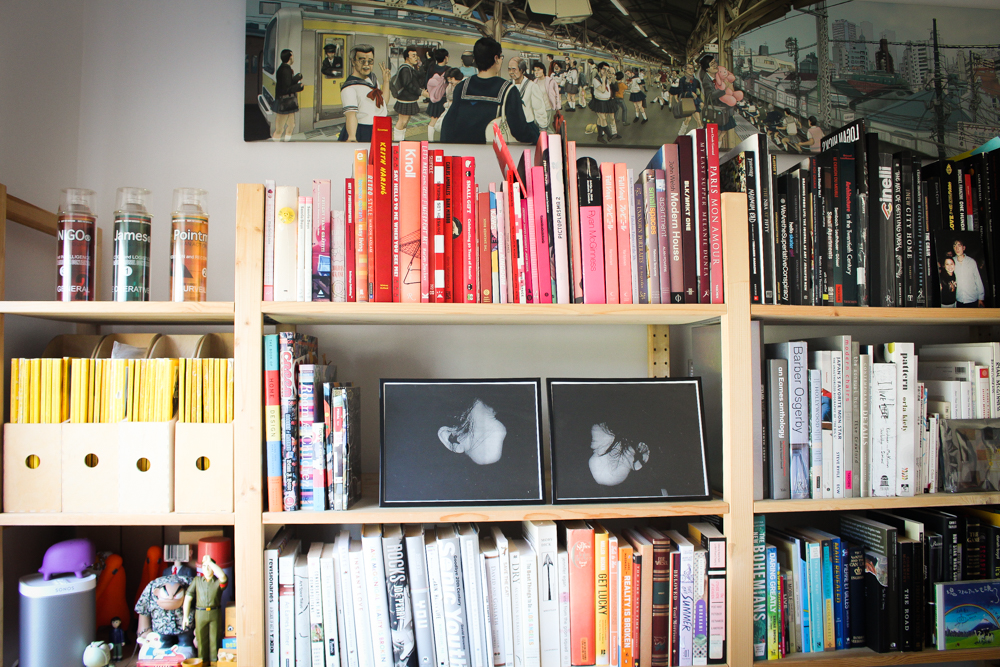
Yeah. Adult coloring books are a thing now.
It’s huge! I’ve done NPR interviews. It de-stresses and puts you in a meditative state, like it helps you with all of that stuff. It calms you down and allows you to focus, and it allows you to be creative and express yourself, and I think that’s really cool. It’s become this huge trend now, and it wasn’t then. And the funny thing is the first book became a New York Times best seller two years after it was published, which is unique. I consider it my career coup, because I’m a New York Times bestseller for a book with no words; I’m very proud of that accomplishment.
And your intentions... when you were creating it, you weren’t like, “Oh, this is going to help people de-stress.”
No! It was more like, “This is cool. I know what’s cool, I’ve been around cool things and cool people my whole life. This is what I want and this is what my community wants.” Like, you work for The Hundreds, which is your generation’s thing. My 16 year old cousin thinks I’m the coolest person in the world because I know Bobby Hundreds. It’s generational. I never thought I’m making this because it’s going to become this trend, but I have been lucky enough to work with people who have pushed trends their whole entire careers, not knowing that they were going to. It’s just that our community is creative, the same as your community is creative, and we’re all growing up. We know what we like and we just make what we like in our community and our community supports it and then the rest of the world catches on. That’s how I see it. Like, mad props to The Hundreds. I see what they do today, using social media, and we didn’t have that growing up. It’s nice to be able to capture that now and use it now.
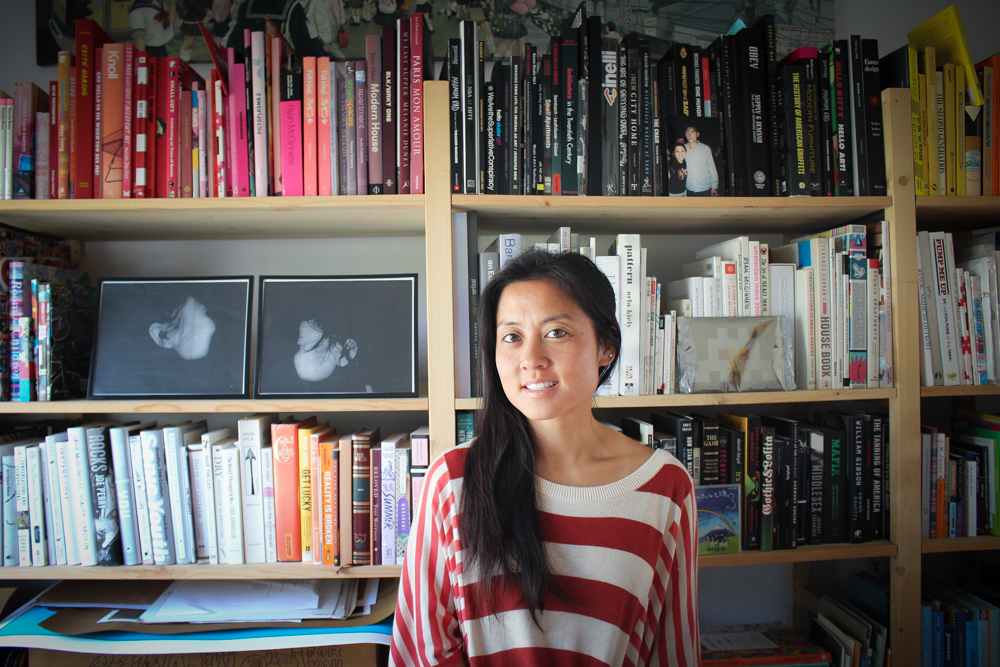
Do you have a favorite page of your book?
The first book, all the artists are living except for Keith Haring. And I have one tattoo on my body and it’s a Keith Haring tattoo. So it was very important to me for Keith Haring to be a part of my first book project. I wrote the Keith Haring Foundation and told them about the project and they allowed me to license a piece. So that piece is very personal to me because here’s an artist who did a lot of work, who died young, who was a street artist come gallery artist, and was very prolific at the end of his days and did a lot of work for good. But also, my ex did a portrait of my daughter. It’s the last page of the first book. So that piece is important to me because it’s of my daughter at the time. In the second book, my favorite piece is the last piece of the book, which is my daughter’s piece. She is now 6 years old and she made that piece—it’s called Earth—for her friend’s birthday. So I’m personally, obviously, biased. In terms of all the other artists’ work, it’s all so different. And if you ask people who color in the book which piece they like most, people’s answers change all the time.
Do you have any advice for aspiring artists or curators or people who want to work in the creative field?
My advice is: don’t seek cool things. Don’t try too hard. You have a gut feeling about what you like, and I think the thing about curating and what makes people good at it, is that it is their eye and their taste and preference and taste comes from years of experience. My house looks the way it does because it’s filled with things by people who I’ve worked with, who I’ve collaborated with, and whom I love. So it’s more personal, and it has a more simple aesthetic. But I mean, whether you’re curating your bookshelf or your home or your gallery or a book project or any kind of project, it has to come from within. I don’t think you can contrive things because then people will know it’s just thrown together, you know? The advice that I would give to young folks would be to surround yourself with creative people who inspire you personally, whether they’re writers, musicians, or artists. Even chefs, or other people. Anyone who makes things. Just be with them.
***
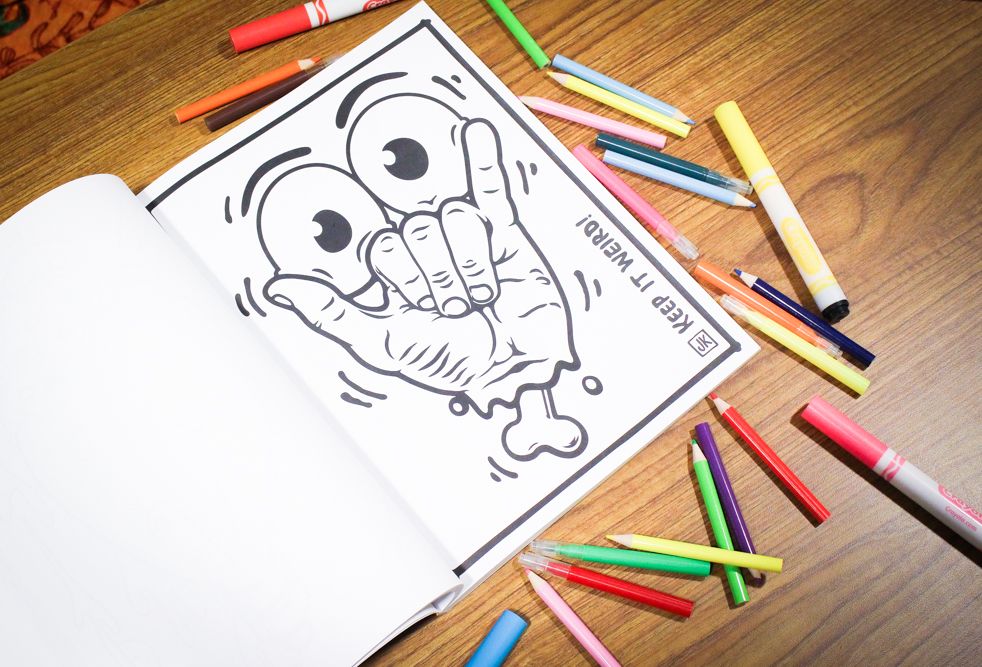
***

